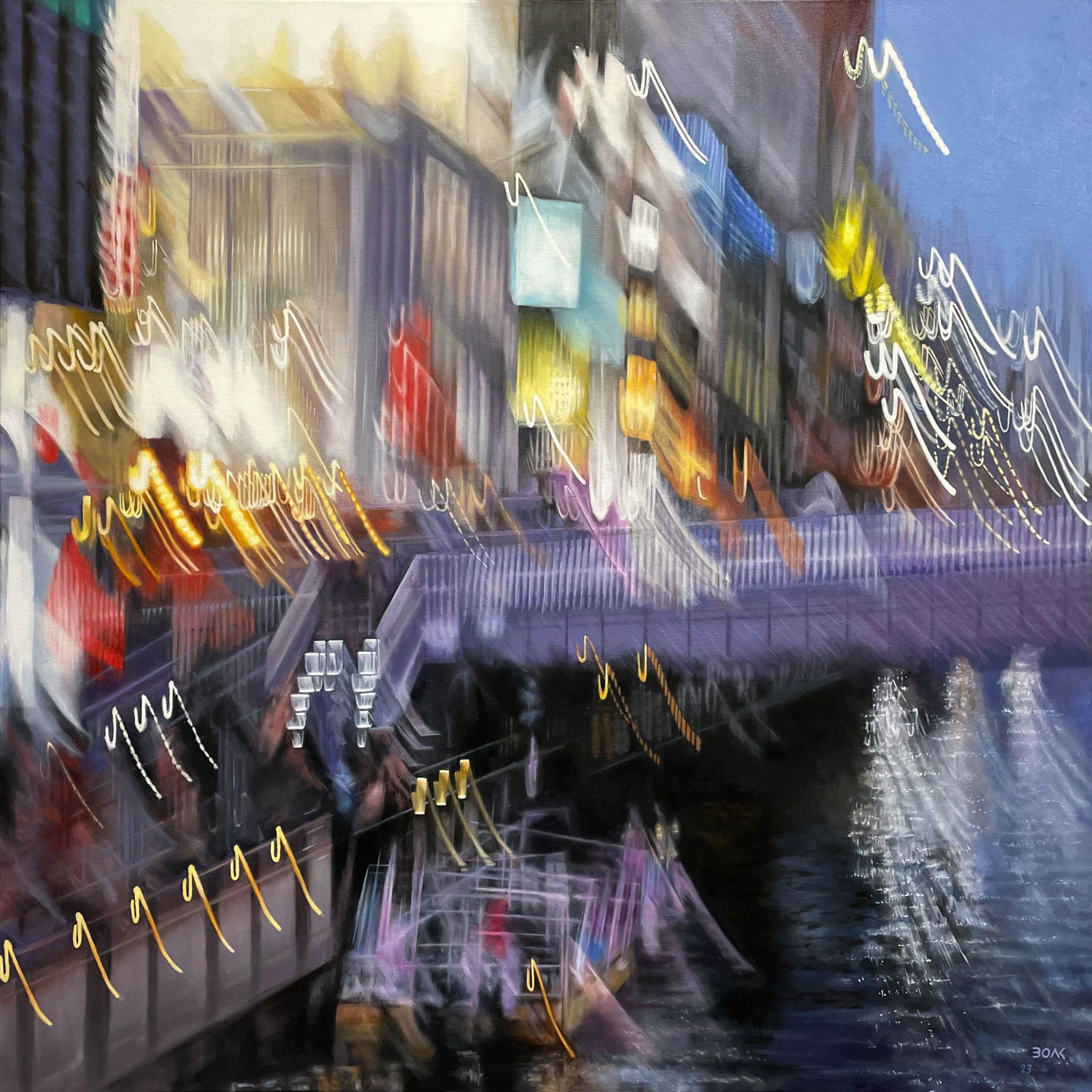We recently connected with John Boak and have shared our conversation below.
Hi John, thanks for joining us today. Are you able to earn a full-time living from your creative work? If so, can you walk us through your journey and how you made it happen?
I always wanted to be an artist. I drew from childhood. While in college my first major was english. Later I declared for fine art. But I also learned the basics of graphic design for print and offset print production working for the Yale Literary Magazine. In those first years after graduation my experience with a few short-lived paycheck jobs encouraged me to go out on my own. I had stopped wandering and was living in Colorado. In a ski town I learned how to cultivate clients for graphic design. I went from being a construction laborer to becoming a design entrepreneur.
Eventually I moved down to Denver and continued the quest for clients. Socializing with people provided most of my leads. Slowly my practice grew: real estate, restaurants, a large healthcare foundation, software companies. Over time I was lucky to find clients who needed branding, brochures, signage, t-shirts, annual reports, and books. From a variety of social contacts, including my college alumni community, I found good work.
What about the art? I never stopped. In the early years in Maui and Steamboat, I contined making oil paintings and silkscreen prints. Being self employed, I was also able to keep working on my own artwork, from paintings and sculpture to prints and posters. My commitment to art reinforced my reliance on freelance work.
Over the years I have exhibited with a variety of galleries in Colorado, LA and New York. But most of my art sales have come from other sources including collectors, art consultancies, web galleries, and other contacts. Since my design practice drew me early on into the world of computers, I have been comfortable with web-design. So, again, skills acquiried through my graphic design work have been useful in my fine art career. I have my own gallery site and e-commerce site.
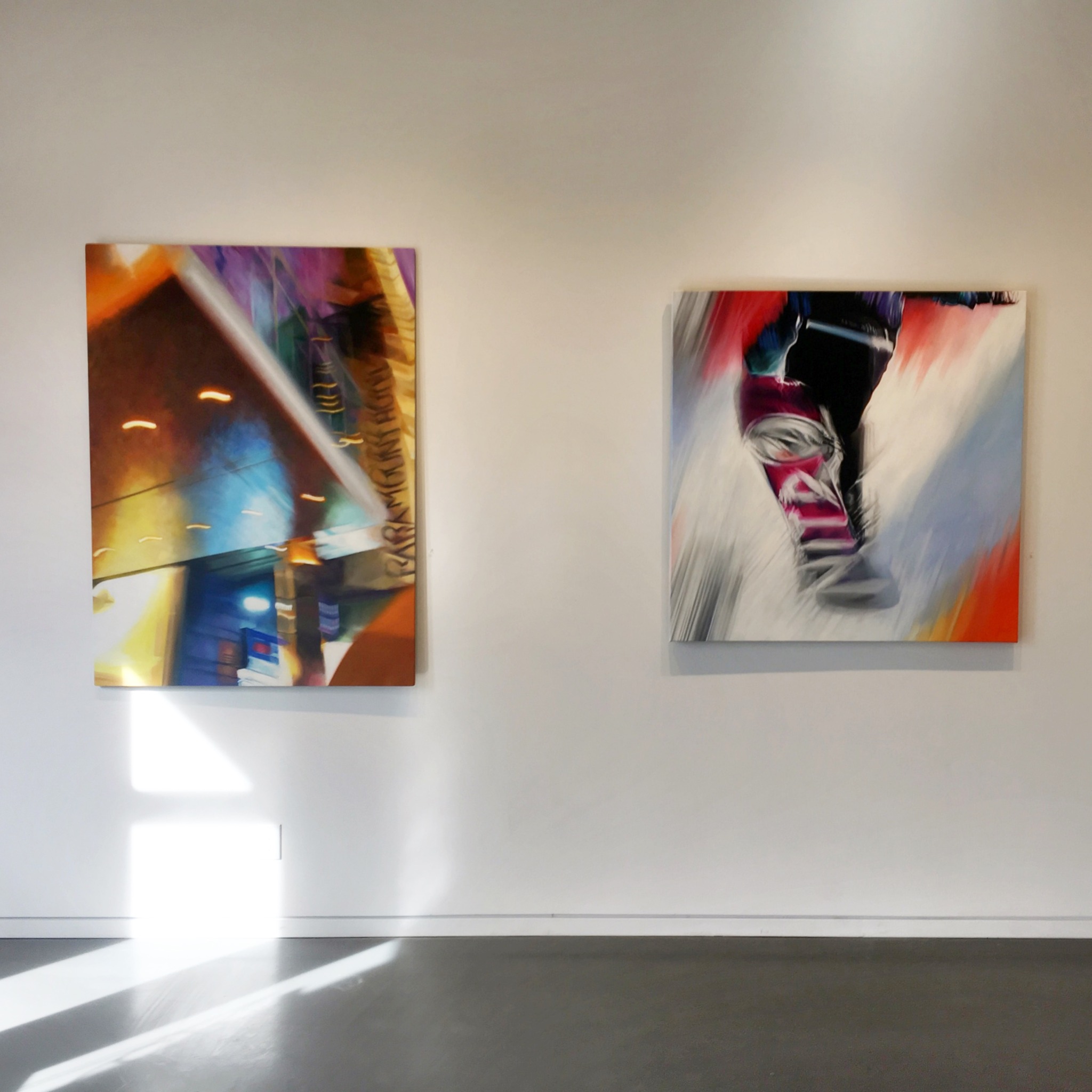
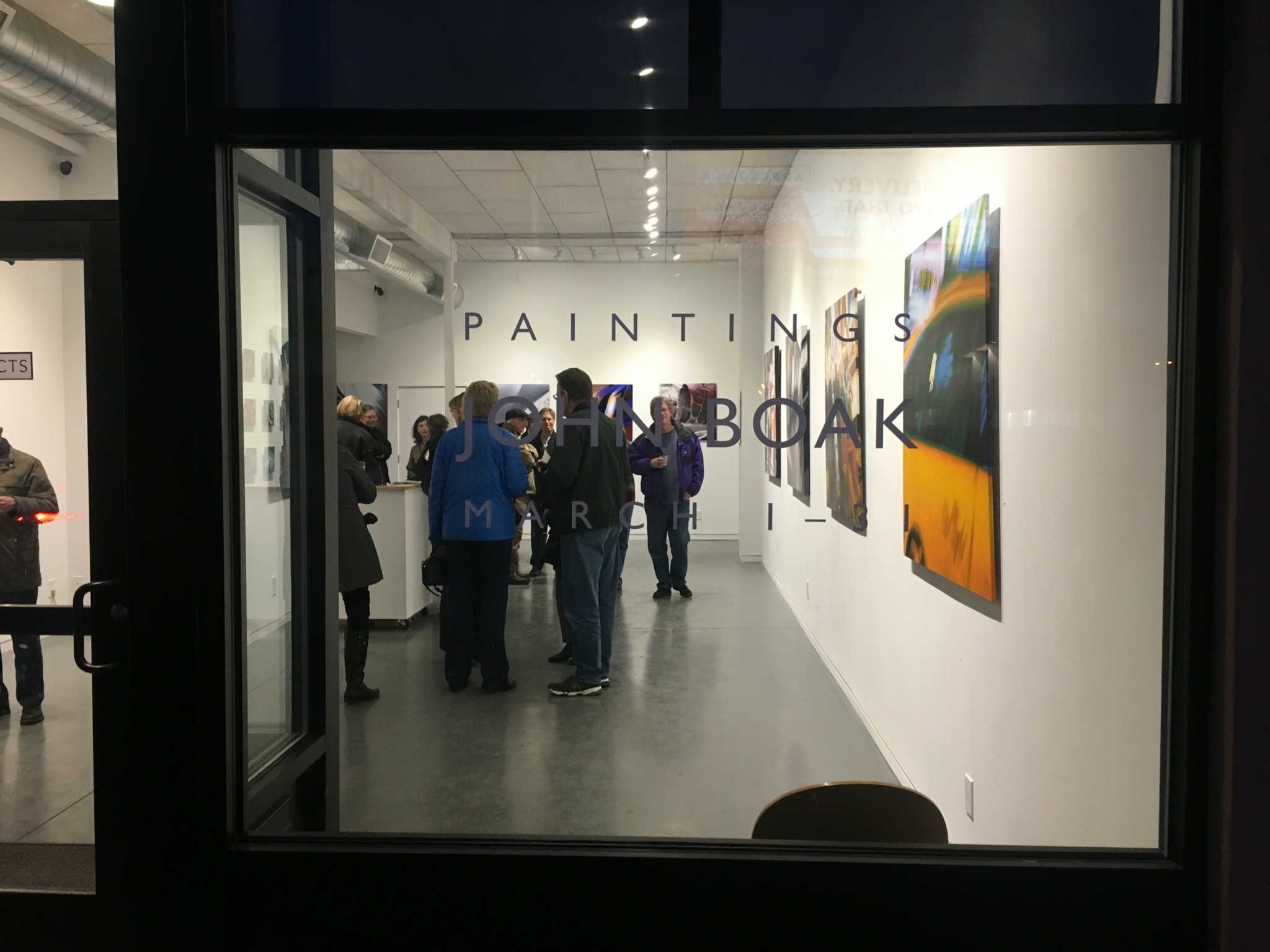
John, love having you share your insights with us. Before we ask you more questions, maybe you can take a moment to introduce yourself to our readers who might have missed our earlier conversations?
My career is rooted in a sustained habit of learning outside of school or university. I studied the visual design revolution of the early 20th Century, and applied the lessons of that era to my own work. The artist-designers of the Bauhaus, deStijl, Jugendstihl, Vienna Verkstatte, Cubism, Futurismo, and ArtDeco are my teachers.
Their ideas and practices informed both client design projects (branding, logoforms, brochures, annual reports, signage, etc) as well as my paintings, prints and sculpture. From the late 1800’s to the present lies a vast canvas of innovations and practical knowledge that emerged as human culture became dominated by visual technologies that were rapidly changing the world.
My graphic design underpinned my fine art output as I learned more about printing. I have created prints with artist’s technologies such as traditional “hand” litho, and serigraphy (silk screen). I have also used large multicolor offset lithographic presses to create prints and posters from hand drawn or painted mylars; they are not reproductions, but rather original prints, because the piece is not seen until it comes off the press. My career in paintings was also fertilized by my contact with the art revolutions from the second half of the nineteenth century to current times.
I adopted computers from the earliest Macintosh. As their capablities grew, so did my use of them in fine art as well as graphics. Not the least is my use of Photoshop over the past three decades. The digital drawings for my paintings, the cartoon in Renaissance parlance, is where a lot of creative experimentation occurs, as it did for the painters 15th-17th centuries. I apply this drawing by hand to black-gesso grounds. Then I begin the long process of painting.
My paintings have evolved over time. I made photo-realistic paintings in the early years. I began a long series of oils derived from colored-pencil landscape drawings which had been made while hiking and camping. I next began a series of paintings of the structural steel of Denver’s Liebeskind-designed art museum.
That led into a series of cubist-inspired paintings of art-deco movie theaters. My most recent works are derived from motion-blurred photographs taken while walking in NewYork, Tokyo and Osaka. I just sold the Osaka painting, called “Dotonbori.”
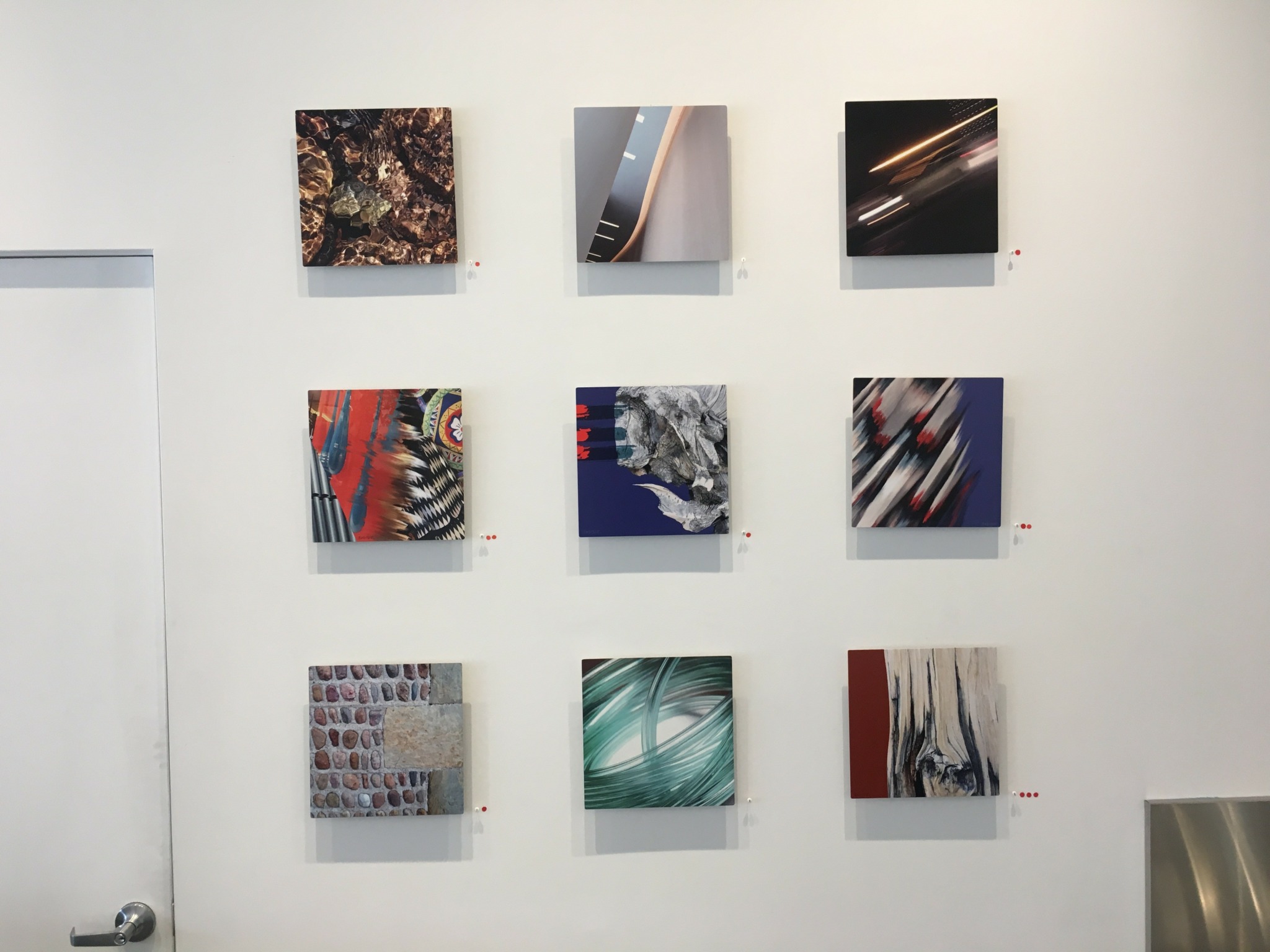
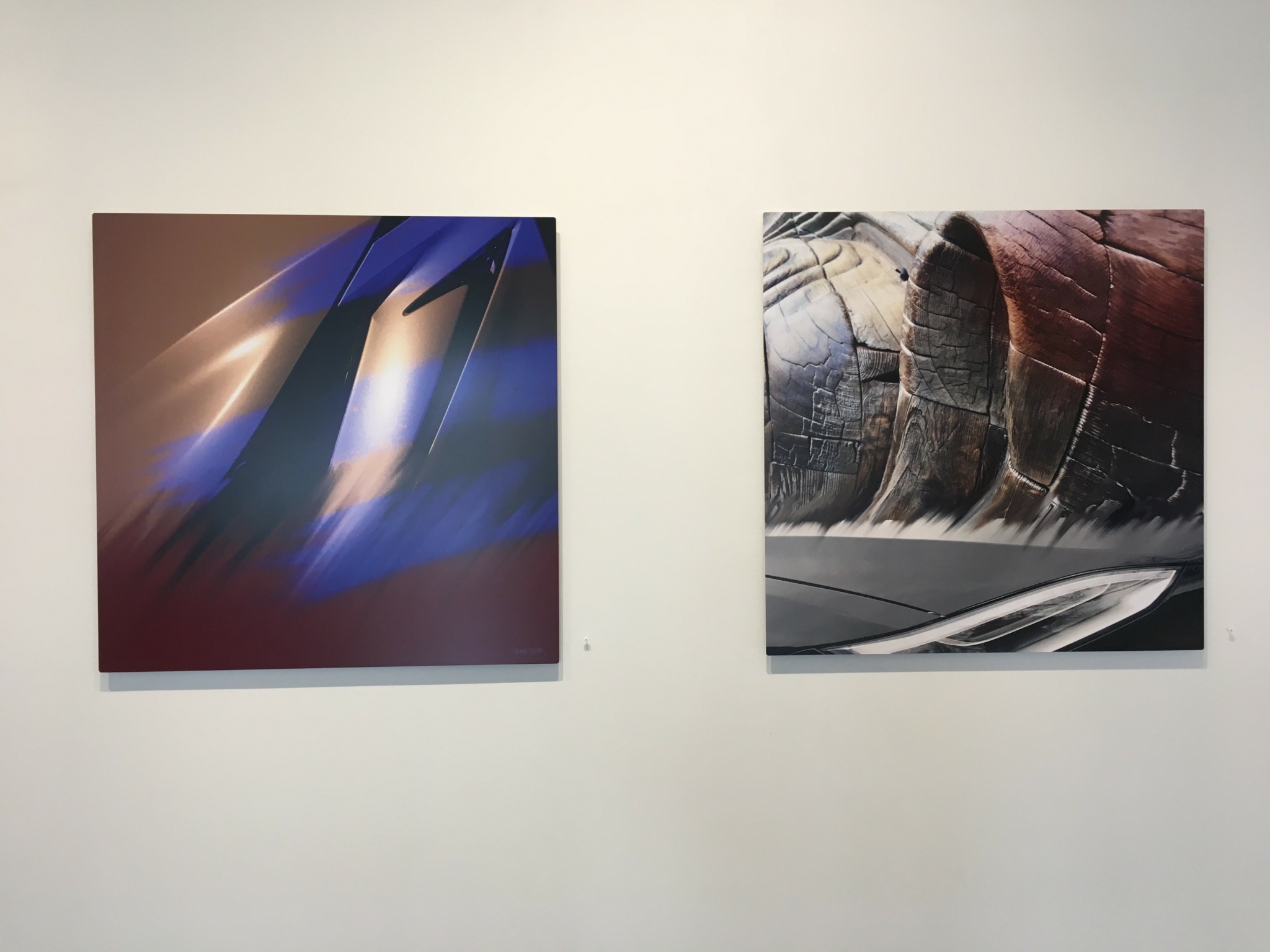
For you, what’s the most rewarding aspect of being a creative?
Whether it is a design for a client, or an art object emerging from my own quest, the reward is in the path of discovery and the joy of encountering the finished work. Whether serving the client’s communication or serving the quests in my own mind, I find both paths to be inherently delightful.
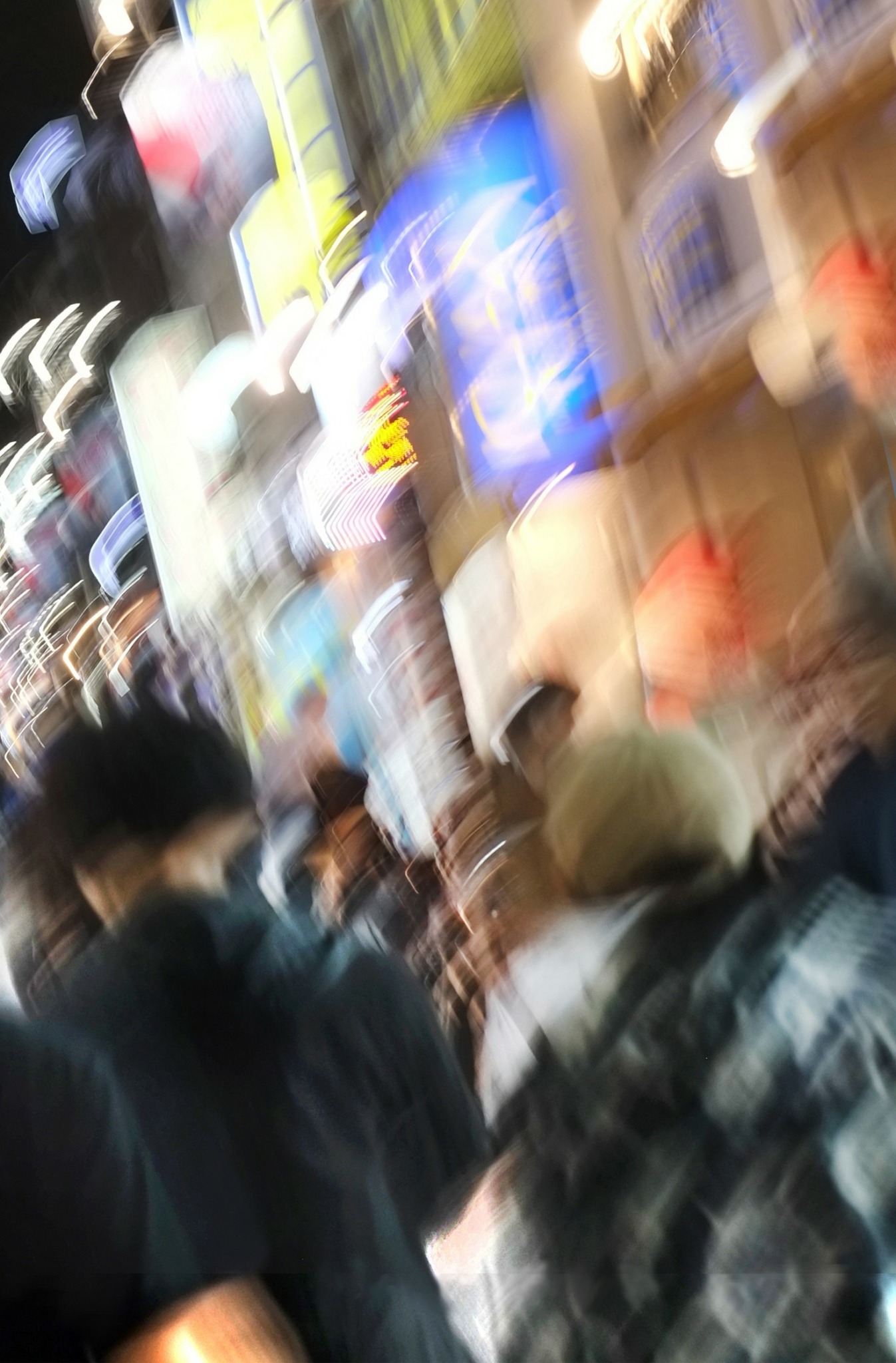
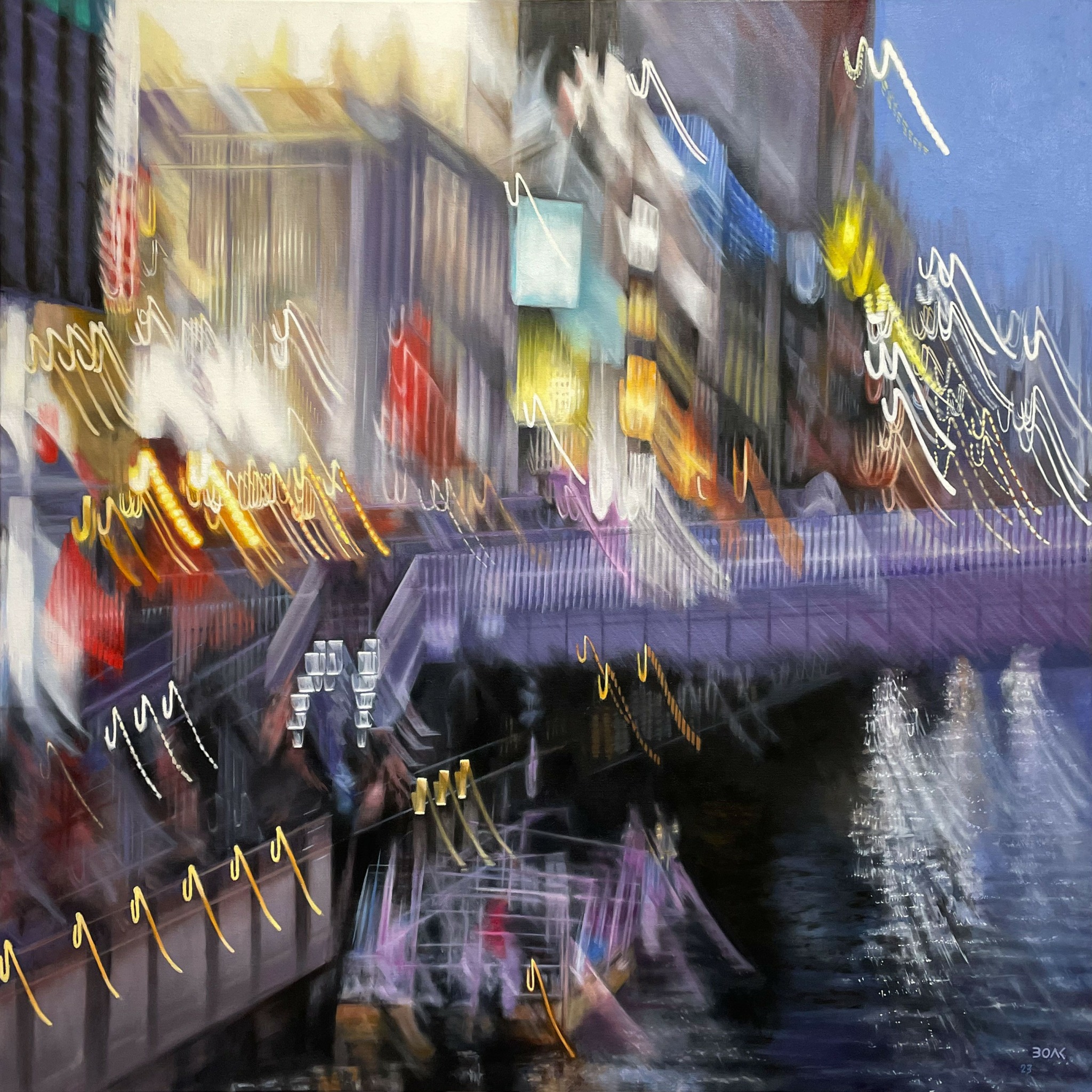
Have any books or other resources had a big impact on you?
Since I was not spending time in a regular business, with a boss, managers, and employees, I subscribed to the Wall Street Journal for many years. It was a simulacrum of enterprise, bringing up topics of business thinking in useful detail. It was also an imaginary trip to the office, bringing up suggestions of the language and the disciplines of the business world. It was also global journalism, helping to broaden my view of what was happening around the planet.
I also make some gentle efforts to keep alive my knowledge of French and Italian not only for brain excercise and health, but also for a change of perspective, which is important for the work of the artist.
I would also recommend Wassily Kandinsky’s two books Concerning the Spiritual in Art (1910) and Point and Line to Plane (1926).
And also “Art And Politics In The Weimar Period: The New Sobriety 1917-1933,” by John Willet.
Contact Info:
- Website: https://boakart.com/ https://shop.boakart.com/
- Instagram: https://www.instagram.com/johnboak/
- Linkedin: https://www.linkedin.com/in/john-boak/
- Other: https://www.threads.com/@johnboak
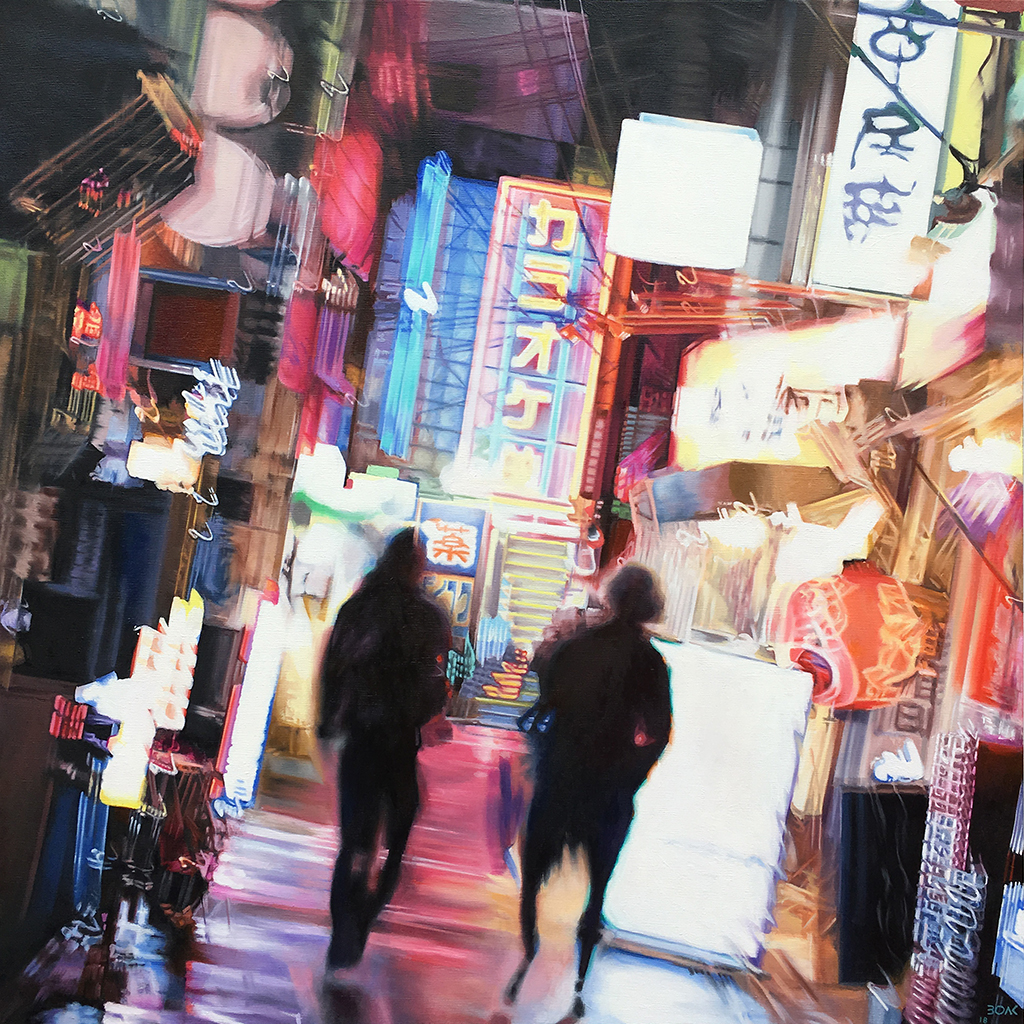
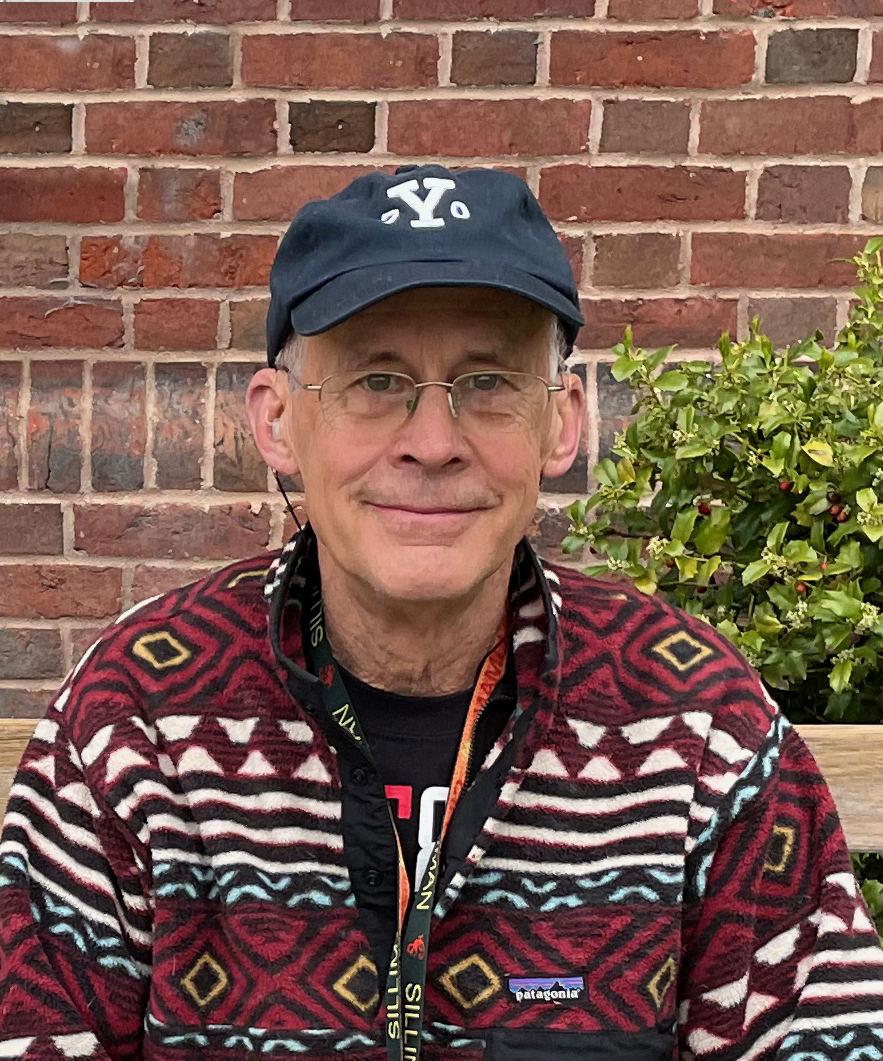
Image Credits
John Boak, Linda Keller


